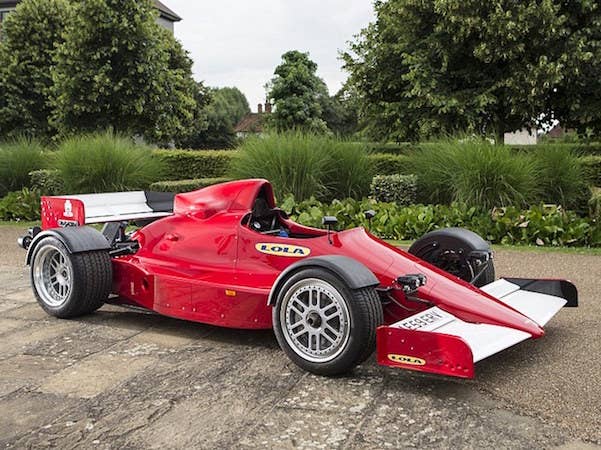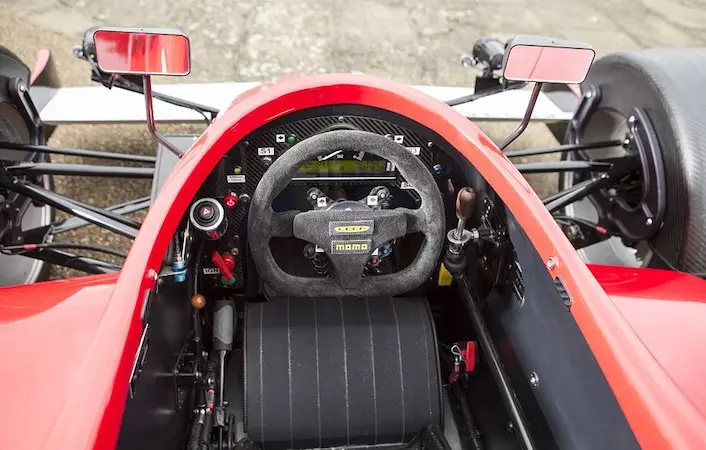Are F1 Cars Street Legal? We unveil the truth...
As cool as F1 cars look on the tarmac, they are sadly not legal on the open roads. You can’t drive one to work or go on a stroll around town. So in answer to the question are F1 cars street legal - unfortunately not.
There are two problems.
One is that you literally won’t be able to drive it and two is that you’re not allowed to. It’s both illegal and almost physically impossible to drive one in normal traffic conditions.
I’ll explain why below!
Why Are F1 Cars Impossible to Drive on the Road?
I’ll make the case that a regular F1 car is impossible to drive on the open road (for that you need to see our cars with F1 engines). That’s because it needs a couple of things to drive optimally:
1. Enough speed
These cars are designed with speed in mind. Everything from their engine to the tyres and brakes need high speed to function properly.
Formula 1 tyres are specifically-designed to be used on slick, smooth race tracks at high speeds. They have no groves, which increases their grip surface area. But this only comes into effect at high speeds.
Without enough speed, the tyres won’t be hot enough. If they’re not hot enough, they will lose their grip on the asphalt because of the way they’re designed. It’ll be like sliding on ice.
The brakes also need high-enough temperatures to work properly. Without working temperatures, the brakes will become almost unusable.
2. Smooth Road
F1 cars have a very low ground clearance, which means any bump, crack in the road, or sudden elevation in the road will damage the car. The tyres will also get damaged from sub-optimal road conditions.
Race tracks are perfectly evened out, with no cracks, bumps, and steady elevation all across. They keep it that way precisely because F1 cars have a low ground clearance.
The slightest bump or debris on the track could spell catastrophe at those inhumane speeds.
Since the tyres have no groves, they’ll get damaged very easily on bumpy and sub-optimal road conditions.
3. Sufficient airflow
An F1 car needs a lot of airflow (from high speeds) to cool the engine. Without this airflow, the engine could blow up because it overheats.
The brakes could also overheat due to the lack of good airflow, which will make your braking experience even more miserable.
4. Experience
F1 drivers go through hundreds of hours of intensive training to learn how to drive a Formula 1 car. A regular person would have no hope driving one.
A major problem is the handling. Formula 1 cars are handled in completely different ways compared to regular road cars.
The acceleration is faster, the top speed is higher, the brakes are more finnicky, overtaking and curve-taking are difficult as well. The steering wheel is also shaped differently.
5. No traffic
You can’t drive an F1 car through normal traffic optimally. The car is extremely low in height, which means you’ll have issues seeing the traffic in front from behind any car.
Furthermore, these cars are not meant to stop regularly like you would on a normal road for red lights or busy traffic. These traffic conditions can literally blow up the engine and damage other internal components.
The second issue is that you’re not allowed to drive them on the street. They’re effectively illegal on any street in the world. Keep reading to see why!
Why Are F1 Cars Not Street Legal?
Where do I even start? Driving on the road comes with many legal requirements. And Formula 1 cars lack many of the elements that are legally required for a car to have. Since they’re not needed on the race track, why add them?
Other elements have been altered to optimize track performance, which puts them outside of street rules.
Here’s what I mean:
- No headlights
- No indicators
- No reflectors
- No tail lights
- No horn
- Ground clearance is too low
- No muffler
- Irregularly-shaped steering wheel
- Non-DOT (Department of Transport) sanctioned tyres
- Non-DOT sanctioned seat belt
Just one of these elements would make F1 cars illegal to drive on open roads, and there are ten of them.
These aren’t just optional elements either. Having no indicators, headlights, tail lights or good tyres will make it impossible to drive safe around other cars and in traffic.
You will get into trouble whether you want to or not. That’s because other drivers either won’t see you (at night) or they won’t know what you’re about to do.
The one exception to this rule is when there is a race organized in a city. The authorities will close the road for public use and reopen them once the race is over.
Can You Make an F1 Car Street Legal?
Technically, you can. But you'll have to make massive changes, and after you’re done with it, it’ll hardly be a Formula 1 car anymore.
In fact, this has been done once before. By the world’s worst F1 team of all time – Lola. Long story short, Lola was founded by a well-known racing chassis designer, Eric Broadley.
He managed to get MasterCard as the team’s sponsor and went on to participate in the Grand Prix of Australia. However, the Lola T97/30, which was the team’s car, didn’t even qualify for the race.
And so, the team disbanded after filing for bankruptcy and being bought out.
However, one good thing that came out of it was the F1R, a prototype F1 car created by the Lola engineers.

They built an F1 car from the ground up and made it street legal. This meant adding all the required elements I mentioned above, like the tail lights, horn, indicators, and so on.
They also increased the ride height to 1.9 inches, with the possibility to increase it to 2.9 inches.
Here’s a handy chart that shows you how they made the road car and what components they changed to make it road-legal:
| Part Name | Actual Lola F1 Car | F1R Built by Lola Engineers |
| Engine | 1997 F1 V8 3.0-liter Engine | 2.0-liter Cosworth Engine |
| Gearbox | Semi-Automatic 1997 F1 Gearbox | G50 five-speed Manual Porsche Transaxle Gearbox |
| Chassis | Lola Chassis | Lola Chassis |
| Tub and Body Panels | Lola Parts | Lola Parts |
| Front and Back wings | Lola Parts | Lola Parts |
| Suspension Height | Front: 1.18 inches Back: 2.9 inches | 1.9-2.9 inches |
| Indicators / Turn Signals, Handbrake, Brake Lights & Headlights | N/A | Present |
So, they replaced the engine, gearbox, changed the suspension height, and added turn signals, a handbrake, brake lights, and headlights.
They did retain many of the original F1 components, like the chassis, tub and body panels, and the front and back wings.

The car has been registered in England and has a UK license plate, so it’s effectively legal to drive it in traffic.
It might not drive as well as you'd expect in traffic, but that’s another story.
Briggs Automotive Company Makes Road Legal F1 Cars
That’s right, there is a company that makes street-legal F1 cars, and you can buy one of them.
The BAC Mono is the slickest thing you’ll see on the open road, and it’s made by Briggs Automotive Company in Liverpool, England.

3D printing and a lot of smart engineering allows brothers Ian and Neill Brigs to create these street legal cars on demand.
Customization is the name of the game here, from the inboard dampers to the chassis, bodywork, six-speed gearbox, and engines.
They usually make 2.5 cars per month and they’re in high demand, with the brothers constantly tinkering with new designs. Their other projects include a two-seater F1 car soon and they're also thinking about electric motors.
I hope I’ve answered all your questions about the legality of going on a Sunday drive with an F1 car on the road. It can’t be done.
So I hope we've answered your question: Are F1 cars street legal? See you in the next guides!
Sources
- One Stop Racing – What Would It Take to Drive an F1 Car on the Road?
- Hagerty – Want an F1 Car? BAC Builds the Next Best Thing – Road-Legal, Too
- Top Speed – 10 Road-Legal Cars Powered by F1 Engines
- The Drive – The World’s Only Street-Legal F1 Car Is for Sale